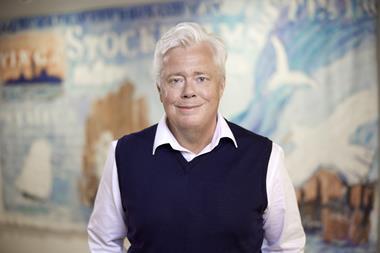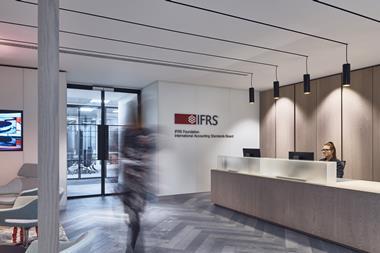Climate change has been the hot topic of the last decade since the agreement of Kyoto in 1997 by members of the United Nations. And as energy prices soar and emissions targets need to be met, climate change projects have started to attract more investment, including that of traditionally sceptical pension funds, which now see potential returns.
The Kyoto protocol set binding national greenhouse gas emission targets for industrialised countries from 2008 to 2012, which has created a market of transferable emissions allowances to achieve those targets.
Some investors believe that emissions trading such as the European Union Trading Emissions Scheme (EU ETS), designed to put the EU on course for its Kyoto targets, is set to increase in value. It allows companies to sell their surplus allowances, or to buy more allowances when they fail their emissions targets, for example due to surplus production. But prices for emission credits have been extremely volatile, plunging from around E30/t in April 2006 for the December 2006 delivery contract to below E10/t in just a few days before recovering around the E15/t mark, scaring investors. However contracts for delivery in 2008-2012 are unconnected to contracts between 2005-2007, the ‘trial' phase I of the EU ETS scheme, and command a premium to the earlier ones. Future prices of those contracts depend on the evaluation of the member states' 2008-2012 emissions plans by the European Commission.
Pension funds are now slowly waking up to new investment opportunities in the combat against climate change. In October 2006, 15 of Europe's largest pension funds and asset managers worth more than £850bn (E1,268bn) pledged to encourage companies and governments to cut global carbon emissions by signing a statement on global warming, sponsored by the Institutional Investors Group on Climate Change's (IIGCC), a forum for collaboration between pension funds and other institutional investors.
The institutional investors will use their collective financial weight to pressurise companies and governments into reducing greenhouse gas emissions, as any investment decisions taken now will have a major impact on the world's climate the group believes. Pension funds agreed to consider climate change issues when appointing asset managers, while asset managers and investment consultants will incorporate climate change risks in their investment analysis and selection.
Some pension funds such as the London Pension Fund Authority, the Environment Agency and the Universities Superannuation Scheme have already built these requirements into their investment management agreements.
Also aimed at pension funds is the two-year project launched by the UK Social Investment Forum (UKSIF) earlier this year. It will focus on companies that are already leading the way on corporate social responsibility but will also target local government pension funds and encourage them to support the governments' commitment to socially responsible investment (SRI), to include environmental and social issues in their investments.
UKSIF will contact the pension funds of around 300 listed companies in autumn and ask them how they incorporate environmental and social principles. The results are due to be published in February/March 2007.
More examples of successful carbon trade investment have occurred over the past few years. They are Clean Development Mechanism projects (CDMs), whereby developed countries and companies such as the World Bank invest in clean projects in developing countries - with Brazil, India China and Mexico currently top investment targets - and get CDM credits, certified emissions reductions (CERs), in return for their investment.
The CDMs need to be approved by the UN Framework Convention on Climate Change (UNFCCC) Executive Board, but often fail the long and bureaucratic approval process. Despite the growing number of suggested CDM projects only half of them materialise, which are often biased towards bigger companies. This puts off investors and makes compliance to emissions targets by signatory countries to the Kyoto protocol more difficult.
However the UN estimates that the CDMs are set to deliver emission reductions of one billion tonnes of CO2 by 2012 - as much as the combined annual emissions of the UK and Spain, says Environmental Finance publisher Graham Cooper. And the number of CERs is steadily growing and now three times bigger than six months ago, according to Hans Juergen Stehr, vice-chair on the CDM Executive Board.
Large pension funds ABP and PGGM announced in September 2006 that they would invest E275m and E200m respectively in carbon trading and technology through the new climate fund Carbon Fund II to reduce the emissions of greenhouse gases.
British investor Climate Change Capital (CCC) established Carbon Fund II after their first carbon fund performed beyond expectations. Similar to a private equity fund which expires in 10 years time, Carbon Fund II already raised E654m within three months of its launch, with the money aimed at projects in developing countries that would cut greenhouse gases and carbon emissions.
In 2005, AgCert, a company that installs equipment to capture methane from pig farms in developing countries raised £60.8m (E89.5m) on the London Stock Exchange, while investors put £135m into an investment vehicle called Trading Emissions Plc (TEP) via the exchange's Alternative Investment Market (AIM). TEP was formed purely to invest in a range of emissions assets including EU and US carbon, US sulphur and Kyoto compliant credits such as CERs, while Econergy is a business model which invests in clean energy projects where the main performance driver will be megawatt hours generated and sold, plus the sale of carbon credits.
And at the end of 2004, Fortis Bank and CDC Ixis closed their E120m European Carbon Fund (ECF).
Investment opportunities have also arisen from the AIM-listed Climate Exchange, which owns significant stakes in the European and Chicago Carbon Exchange (ECX and CCX), the largest carbon trading platforms in Europe and North America respectively, and depends on volume traded rather than the price of CO2 allowances. The steady rise in open interest on those exchanges shows that carbon trade and its market liquidity is taking off.
The voluntary carbon credit market also provides an incentive to invest as, due to less regulation than in the EU ETS market, it has more flexibility and no end-date, although it hinges on transparency and standardisation. But according to founding director Kristian Bruening of Climate Wedge, a specialist climate change investment advisory company, there is a lot of potential in the voluntary market, in particular as the current greenhouse gas regulation falls short of achieving meaningful reductions.
The development of new structured products for the new commodity market such as repurchase agreements (Repos), averaging product, bonds, indices and emissions related Project Finance deals on top of existing financial instruments such as spot, forwards, futures and options is also boosting investment.
Head of SRI at Credit Agricole in Paris Stephane Voisin advised pension funds should not directly invest in the carbon emissions trade such as the direct selling and buying of allocations, but needed to be aware of how responsible European companies' responsibility were towards emissions and emissions targets. He stressed that two factors will be taken into consideration, the risk and the responsibility analysis, which will lead to a paradox of two very different results.
Voisin says that across Europe more funds were being invested in SRIs and assets involved had increased considerably over two years. But he still sees no reduction in the investment in oil and gas companies, as mainstream investors were not looking at SRI. He admits: "At the moment more investors look at the risk factor and less at the responsibility factor."
According to Voisin, Kyoto and the EU ETS should have had an impact on the investment scene but said all countries in the ETS scheme were over-allocated carbon allowances in the wake of high oil prices and droughts such as on the Iberian peninsula, which was preventing the reduction of emissions. He adds that the EU ETS was deeply intransparent, a popular opinion, and that "the most virtuous company will not be a winner in financial terms." Speakers at the Carbon Finance 2006 Conference in London agreed that the EU allocated too many emissions credits to its members, while a scarcity of allowances is needed to create a market. More transparency is needed in the future assessments of National Allocations plans (NAPs).
Both Voisin and Affine Capital's CEO Peter Clarke said investors were waiting to see what happened after 2012, when Kyoto and phase II of the EU ETS end. "With the exception of the US, which is not a signatory to Kyoto, no one is seriously laying down the plan for post 2012 and that is a major, major impediment to large-scale investment. The reason is simple: If a project developer is considering a renewable source, a wind-farm, for major investment of billions, these technologies have a useful life of 30, 40 years so you don't want to build just to receive a benefit for five of those 40 years. Major investments in clean technologies are now being planned on the basis that they have to stand alone economically and very few project developers are relying on Kyoto incentives to finance their project bills", says Clarke.
Carbon Finance 2006 chairman Anthony Hobley said there was no doubt that the EU ETS and CDMs were going to continue post 2012 in phase III, although several issues still needed clarification. In terms of Kyoto however, total uncertainty currently surrounds post 2012, which is effectively losing investors every day.
Clarke reiterates that the commodities market including carbon was growing quoting Barclays Capital which said that assets would grow from $80bn now to $120bn in 2008. But Clarke said SRI was extremely difficult to market, while investment in commodities such as oil, gas and mining was still flowing which reduces returns in the SRI sector, although he believes emissions-based liquidity will improve closer to 2008.
Clarke predicts the next area of growth would stem from the US after the state of California, as the first US state, passed legislation in September 2006 to impose a cap on the expulsion of greenhouse gases by major industries. With the help of emissions credit trade, this should cut California's emissions by a quarter by 2020. The momentum is growing - despite the US pulling out of Kyoto in 2001 - thanks to the involvement of banks, which have brought liquidity to the market.
Dexia Credit local director of Energy Ranjan Moulik sees the separation of the European and US market as a possible obstacle to carbon trade investment as he is doubtful about the fungibility of European credits in the US market. But Moulik is confident that carbon trade was attracting investors. He sees pensions funds as significant investors as they have contributed to a huge number of carbon funds.
Moulik calls the EU ETS a success, adding that coal or gas utilities were actively trading carbon and taking compliance very seriously. But he also admits investors will have to look at the outcome of the next Kyoto meeting, the Conference of the Parties to the Climate Change Convention (Cop 12) and members of the parties to the Kyoto Protocol (Mop 2) in Nairobi on 6-17 November, for a plan beyond 2012.
But with environmental legislation only set to become more stringent and the possible expansion of EU ETS to other sectors such as the aviation industry, new evolving market opportunities such as ethanol in South America and carbon trading in North America, and basic commodities air and water projected to be in increasingly short supply in the future, investment is set to bring many returns in this rapidly growing market.












No comments yet